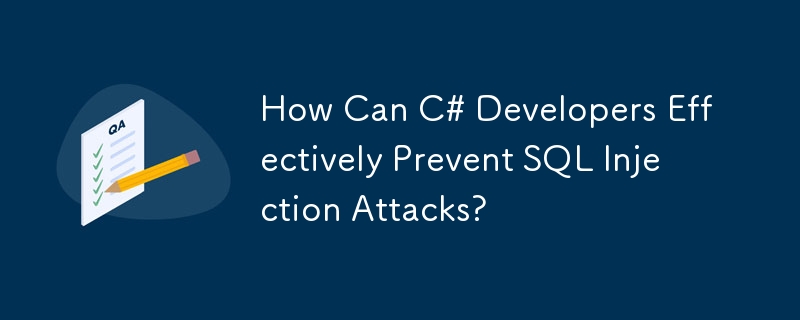Found a total of 10000 related content
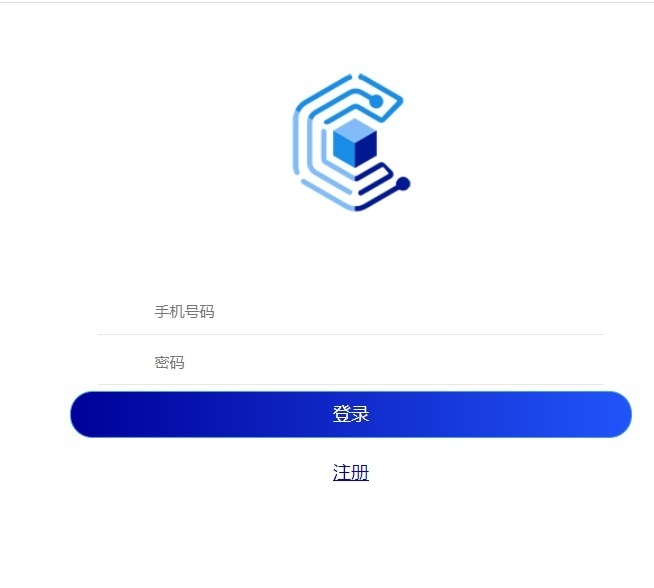
Develop the management system on cloud for simple programmble controller.
Article Introduction:These two days, I am modifying the management system of the programmable controller on cloud, which uses VUE as the front-end framework, PHP as the back-end development language, and mysql and redis to store data.
redis stores real-time data during
2024-11-02
comment 0
786
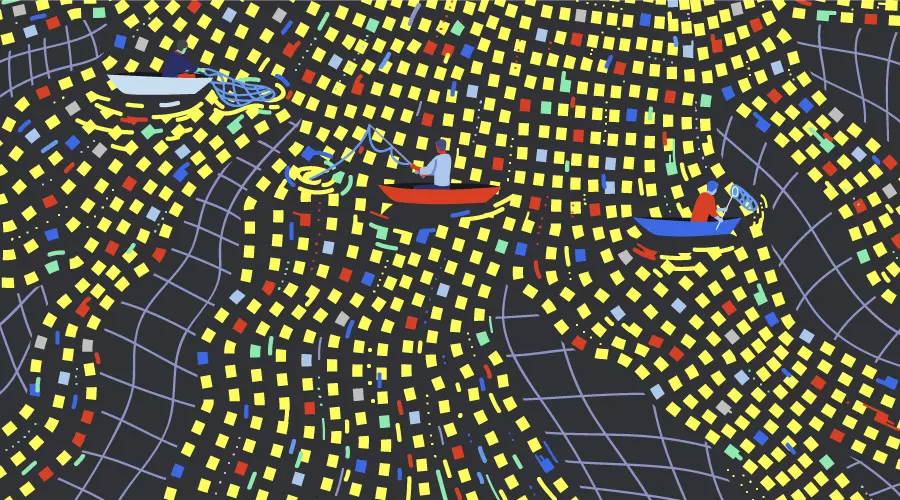
Introduction to Data Management & Visualization in JavaScript
Article Introduction:This article explores building effective data visualization tools, emphasizing a robust data management framework. Creating compelling visuals requires careful consideration of backend storage, data access methods, and a user-friendly front-end.
A
2025-02-16
comment 0
728

Yii Developer: Most recquired skills in Europe
Article Introduction:The key skills that European Yii developers need to possess include: 1. Yii framework proficiency, 2. PHP proficiency, 3. Database management, 4. Front-end skills, 5. RESTful API development, 6. Version control system, 7. Testing and debugging, 8. Security knowledge, 9. Agile methodology, 10. Soft skills, 11. Localization and internationalization, 12. Continuous learning, these skills make developers stand out in the European market.
2025-05-11
comment 0
477
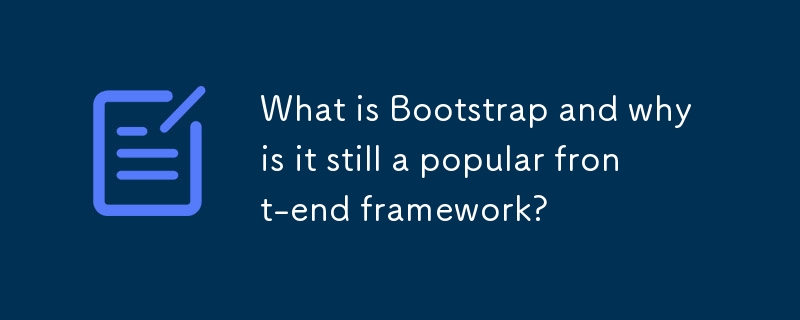
What is Bootstrap and why is it still a popular front-end framework?
Article Introduction:Bootstrap, a popular front-end framework, simplifies responsive web design via its grid system and mobile-first approach. Its ease of use, large community support, extensive component library, and responsive design contribute to its continued popula
2025-03-12
comment 0
423

Introduction to Craft CMS
Article Introduction:Craft CMS: A Deep Dive into a Flexible and User-Friendly CMS
Craft CMS is a powerful, database-driven content management system (CMS) ideal for building and managing content-rich websites. While requiring familiarity with HTML and CSS for front-end
2025-02-19
comment 0
867

Tutorial on using y framework
Article Introduction:The y framework is a lightweight front-end JavaScript framework for building complex and high-performance web applications. Specific steps include: 1. Install: through NPM or CDN; 2. Create application instances; 3. Mount the application; 4. Use rich modules, including routing, requests, status management, plug-ins and components; 5. Create simple applications based on the examples. The framework is lightweight, modular and easy to scale, with an active community and good documentation.
2025-04-18
comment 0
351

Netflix's Frontend: Examples and Applications of React (or Vue)
Article Introduction:Netflix uses React as its front-end framework. 1) React's componentized development model and strong ecosystem are the main reasons why Netflix chose it. 2) Through componentization, Netflix splits complex interfaces into manageable chunks such as video players, recommendation lists and user comments. 3) React's virtual DOM and component life cycle optimizes rendering efficiency and user interaction management.
2025-04-16
comment 0
867

Bootstrap: Applications and Advantages Explained
Article Introduction:Bootstrap is a front-end framework for quickly building responsive websites. Its advantages include: 1. Rapid development: leverage predefined styles and components. 2. Consistency: Provide a unified design style. 3. Responsive design: The built-in grid system is adapted to various devices. Bootstrap simplifies the web development process through CSS classes and JavaScript plug-ins.
2025-05-10
comment 0
341

The Frontend Landscape: How Netflix Approached its Choices
Article Introduction:Netflix's choice in front-end technology mainly focuses on three aspects: performance optimization, scalability and user experience. 1. Performance optimization: Netflix chose React as the main framework and developed tools such as SpeedCurve and Boomerang to monitor and optimize the user experience. 2. Scalability: They adopt a micro front-end architecture, splitting applications into independent modules, improving development efficiency and system scalability. 3. User experience: Netflix uses the Material-UI component library to continuously optimize the interface through A/B testing and user feedback to ensure consistency and aesthetics.
2025-04-15
comment 0
570

Understanding Frontend Framework Ecosystems
Article Introduction:The core of the front-end framework ecosystem lies in improving development efficiency and maintenance. Front-end frameworks are not only tools for writing pages, but also ways to organize code. For example, React emphasizes component-based reuse, Vue prefers gradual use, Angular comes with its own family bucket, and Svelte is known for compilation-time optimization; the ecosystem mainly includes: 1. Construction tools (such as Vite, Webpack), 2. Routing systems (such as react-router, vue-router), 3. State management (such as Redux, Pinia), 4. UI component libraries (such as AntDesign), 5. SSR/SSG solutions (such as Next.js); Selecting frameworks requires considering company type, thinking style and project needs; learning
2025-07-18
comment 0
571

Is Vue used for frontend or backend?
Article Introduction:Vue.js is mainly used for front-end development. 1) It is a lightweight and flexible JavaScript framework focused on building user interfaces and single-page applications. 2) The core of Vue.js is its responsive data system, and the view is automatically updated when the data changes. 3) It supports component development, and the UI can be split into independent and reusable components.
2025-04-03
comment 0
975

What are the benefits of using a frontend framework
Article Introduction:Using front-end frameworks can significantly improve development efficiency and code maintainability. First, they provide built-in tools, such as component structure, routing and state management, to avoid duplication of wheels; second, the framework forces code structure to facilitate team collaboration and long-term maintenance; third, it supports modular development, facilitate independent testing and updates; finally, after mastering, it can be reused across projects to reduce the repeated solutions to common problems.
2025-06-26
comment 0
149

What is a single page application SPA
Article Introduction:The SPA can change content without refreshing the page because it uses JavaScript to dynamically update the local content of the page, and implements it with the help of front-end framework and asynchronous loading technology. Its core mechanisms include: ① Request data from the server through AJAX or FetchAPI; ② Use front-end routes to manage URL changes; ③ Replace part of the content instead of full page overloading in existing pages. This mode is suitable for scenes such as backend management systems, social network interfaces, online editing tools, etc. that require frequent interaction, but attention should be paid to SEO optimization, home screen loading speed, memory management and browser compatibility. During development, it is recommended to use code chunking, evaluate whether SSR or static generation is introduced, and continuously monitor performance to ensure user experience and application stability.
2025-06-26
comment 0
1041
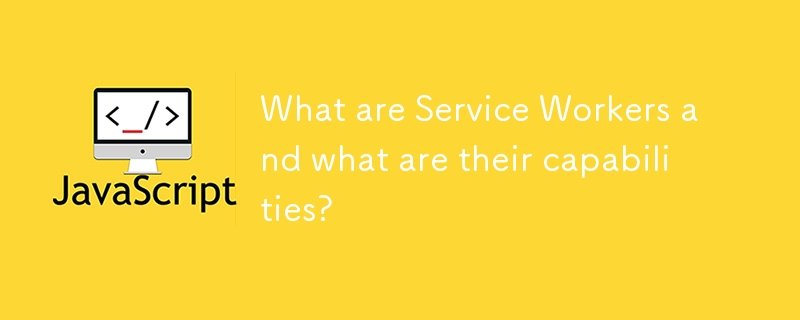
What are Service Workers and what are their capabilities?
Article Introduction:ServiceWorkers is a JavaScript script running in the browser's background. It serves as a proxy between the web page and the network, and supports offline access, messaging, push notifications, background synchronization and routing control. 1. It does not operate the DOM, but intercepts requests and determines the resource loading method. It can run in the background even if the page is closed; 2. The main capabilities include: offline access (through cache), messaging (communication with the front-end), push notifications (receive server messages), background synchronization (replace requests after networking), routing control (custom loading logic); 3. Commonly used to build PWA applications, optimize cache policies, and implement message push; 4. Pay attention to HTTPS environment limitations, complex life cycle management, compatibility issues, and non-existence
2025-06-25
comment 0
781

Understanding the differences between Laravel Breeze and Jetstream.
Article Introduction:The main difference between LaravelBreeze and Jetstream is positioning and functionality. 1. In terms of core positioning, Breeze is a lightweight certified scaffolding that is suitable for small projects or customized front-end needs; Jetstream provides a complete user system, including team management, personal information settings, API support and two-factor verification, which is suitable for medium and large applications. 2. In terms of front-end technology stack, Breeze uses Blade Tailwind by default, which prefers traditional server-side rendering; Jetstream supports Livewire or Inertia.js (combined with Vue/React), which is more suitable for modern SPA architectures. 3. In terms of installation and customization, Breeze is simpler and easier to use
2025-07-15
comment 0
672
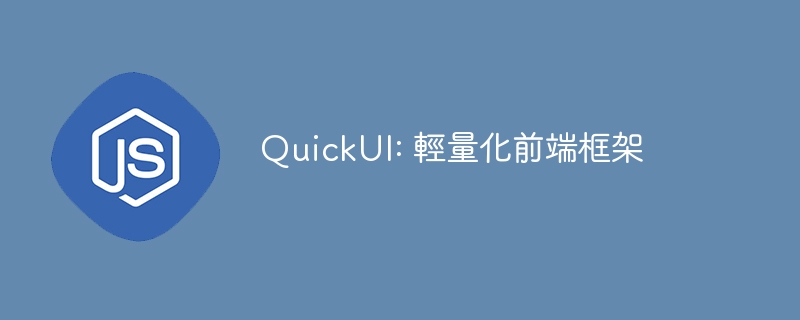
QuickUI: lightweight front-end framework
Article Introduction:Original name: PDQuickUI, renamed to QuickUI since version 0.6.0
QuickUI is a front-end rendering framework developed purely in JavaScript. Improve rendering performance by integrating virtual DOM technology to achieve fast data response and automatic updates.
Core features
Efficient virtual DOM
Achieve efficient DOM updates through accurate difference comparison algorithm
Smart attribute update system, only updates changed values
Intelligent sub-node comparison mechanism to minimize DOM operations
Responsive data processing
In-depth data monitoring system ensures immediate reflection of data changes
2024-12-27
comment 0
364

Frontend Development with WebGL Shaders
Article Introduction:WebGLshaders are programs running on the GPU to handle graphics rendering details. 1. It is divided into two types: vertex shader and chip shader; 2. Write in GLSL language to control vertex position and pixel color; 3. Implement high-performance visual effects in the front end, such as particle system, 3D effects, etc.; 4. Get the WebGL context, compile and link shaders, set buffers and draw; 5. Common application scenarios include dynamic background, data visualization, and 3D model rendering; 6. Optimization suggestions include controlling frame rate, reducing CPU-GPU communication, rational use of texture maps, and paying attention to accuracy issues. After mastering it, it can effectively improve the front-end interactive experience.
2025-07-16
comment 0
392

What is a 'headless' software
Article Introduction:Header less software refers to a system or application without a user interface. It communicates with other systems through APIs to realize backend automation processing. Its core features are API-first design, front-end and back-end separation architecture, and no built-in UI layer. It is commonly found in less CMS, browsers and e-commerce platforms. It has the advantages of high flexibility, good performance, and easy to expand. It is suitable for multi-terminal unified content management or multi-platform interaction scenarios. Choosing a headless less solution can improve customization capabilities, but it also requires more development investment.
2025-07-11
comment 0
882

